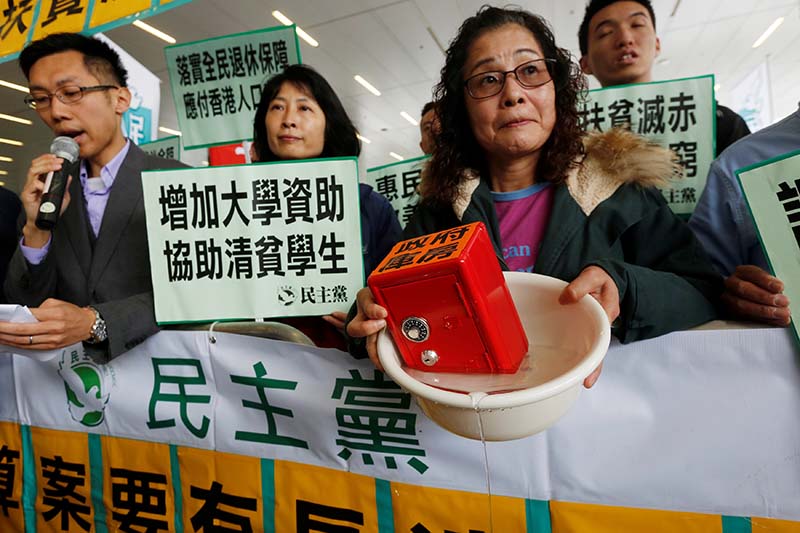China cuts GDP growth target as it pushes through reforms, de-leveraging
BEIJING: China has cut its GDP growth target this year as the world's second-largest economy pushes through painful reforms to address a build-up in debt and strives to keep a lid on risks in its financial sector.
China aims to expand its economy by around 6.5 percent in 2017, Chinese Premier Li Keqiang said at the opening of the annual meeting of parliament on Sunday. China targeted growth of 6.5 to 7 percent last year and ultimately achieved 6.7 percent, the slowest pace in 26 years.
A lending binge and increased government spending have fuelled worries among China's top leaders about elevated debt levels and an overheating housing market.
The 2017 target for broad money supply growth was cut to around 12 percent from about 13 percent for 2016, while the government's budget deficit target was kept unchanged at 3 percent of gross domestic product.
China will continue to implement a proactive fiscal policy and maintain a prudent monetary policy, Li said, adding that government would press on with supply-side reforms and take steps to control risks and ensure safety in the financial sector.
"In general, China's policy stance has turned to 'risk control' and 'bubble deflating'. This means that the monetary policy will gradually tighten," said Zhou Hao, emerging markets economist at Commerzbank AG in Singapore.
The target for consumer price inflation this year was kept unchanged at 3 percent.
VIGILANCE AGAINST RISKS
China should have higher levels of vigilance against risks from non-performing assets, debt defaults, shadow banking and internet finance, Li said.
It will steadily push forward with de-leveraging, mainly in the non-financial corporate sector, he said.
The finance ministry pledged in its work report released on Sunday to clamp down on local government debt risk.
China's debt-to-GDP ratio rose to 277 percent at the end of 2016 from 254 percent the previous year, with an increasing share of new credit being used to pay debt servicing costs, according to a recent UBS note.
Chinese banks doled out a record 12.65 trillion yuan ($1.83 trillion) of loans in 2016, and recent data shows that new yuan loans hit 2.03 trillion yuan in January, the second-highest ever.
The central bank said in a working paper published last month that the debt deleveraging process should be managed prudently to help avoid a liquidity crisis and asset bubbles.
"We will apply a full range of monetary policy instruments, maintain basic stability in liquidity, see that market interest rates remain at an appropriate level, and improve the transmission mechanism of monetary policy," Premier Li said.
China will also press on with asset securitisation and debt-to-equity swaps this year.
China will continue to implement a city-based policy to reduce real estate inventories, mainly in the third and fourth-tier cities, Li said.
CAPACITY CUTS
China will push forward with reform of state-owned firms and assets this year, Li said.
Ownership reforms at more than 100 central government-run enterprises will be completed by the end of the year as part of efforts to use private capital to revive its lumbering state sector, state media reported last month.
China is also looking to shutter more 'zombie' enterprises, or firms with inefficient surplus capacity and saddled with debt.
The National Development and Reform Commission (NDRC) said in a work report released at the opening of the National People's Congress that it would shut or stop construction of coal-fired power plants with capacity of more than 50 million kilowatts.
China will also cut steel capacity by 50 million tonnes and coal output by more than 150 million tonnes this year, the economic planner said.
Fixed-asset investment is expected to rise about 9 percent in 2017, down from last year's target of 10.5 percent.
($1 = 6.8954 Chinese yuan renminbi)






